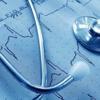Alternative Treatments for Erectile Dysfunction

What is erectile dysfunction?
Erectile dysfunction (ED) is a common disorder affecting men of all ages, although it is more common in men above the age of 50. It affects the ability to have an erection and maintain it for a satisfying sexual experience. To understand the nature of alternative treatments, it becomes imperative to understand the underlying causes.
Sexual arousal begins in the brain. Upon receiving visual or sensory stimuli, the brain sends signals to the nerves in the penis for the production of chemical neurotransmitters. The neurotransmitters in turn influence production of cyclic guanosine monophosphate (cGMP) which is responsible for the dilation of the arteries in the penis. As the blood vessels dilate, blood rushes in to fill the muscular chambers of the penis. When filled with blood, the muscular chambers, or corpora cavernous, become firm producing an erection. Valves located at the back of the penis prevent the blood from flowing out, thus, helping to maintain the erection.
Erectile dysfunction is usually caused by a narrowing of the blood vessels in the penis. Narrowing of blood vessels can restrict the flow of blood into the penis posing problems in erection. However, there are several other factors that can result in the development of this disorder including (but not limited to) depression, anxiety, stress, other medical conditions, structural disorders, a change in the hormone levels, age and prescription drugs.
Treating erectile dysfunction
There are various treatments available for erectile dysfunction. Most of the treatments are effective but their degree varies across individuals. The treatments are based on the factors that cause the condition and the severity of the situation.
Other factors considered are the existence of other health conditions. This is because some health problems may inhibit some types of treatment prompting use of other methods. The most common method used to treat erectile dysfunction is administering oral drugs.
There are different types of drugs that can be given but they all serve the same goal; to improve the nitric oxide levels in the body. This helps to improve blood flow to the penis enabling a patient to have an easier time getting an erection.
What are some of the alternative treatments available for ED?
Treatments involving oral drugs don't work for everyone. When this happens, it becomes necessary to seek alternative means to treat the condition. Such means include:
- Psychotherapy
- Hormone therapy
- Self-injections
- Penile implants
- Use of penis pumps
- Surgery
- Natural remedies
1. Psychotherapy
In some individuals, the inability to have an erection may have psychological reasons. The brain plays the most important role of receiving stimuli, sending the right signals and perceiving pleasure. Any disorder that affects our brain can have an effect on sexual activity. Depression, stress or problems in the relationship can affect sexual performance in men. Psychotherapy and counseling are often used to delineate possible stresses and work on resolving them. A healthy and happy mind can boost sexual activity.
2. Hormone therapy
Testosterone, also known as the male hormone, is responsible for controlling sexual drive in men. A deficiency of this hormone due to thyroid conditions or other reasons may result in erectile dysfunction. Hormone therapy is successfully used to cure the symptoms in a lot of patients.
3. Self-injections
Injections of the hormone alprostadil are used to dilate the blood vessels in the penis. The required dosage is injected directly in the side or base of the penis, or it may be placed at the tip of the penis. The hormone injection enables you to have an erection within five to ten minutes that lasts for twenty to forty minutes. However, it has side effects such as bleeding or even fibrous tissue formation at the points of injection.
4. Penile implants
Penile implants are inserted into the penis surgically to assist an erection. There are two kinds of implants; semi-rigid rods and inflatable implants.
Semi-rigid rods are considered for men who are older and do not engage frequently in sexual activity. The inflatable devices can be used by anyone. They have chambers that can be inflated. They are comfortable and closely replicate a natural erection. However, inflatable implants are expensive and may not be easily available.
5. Use of penis pumps
A penis pump is a device that is used to create a vacuum in the blood vessels of the penis, forcing blood to flow into the space created. It comprises of a plastic tube that can be fitted around the penis. Air is pumped out by the means of a motorized or hand operated piston. A rubber ring placed at the base of the penis ensures that the blood stays within the penis. The penis, therefore, becomes hard enough to have sex. After sex, the ring is removed. It is quite successful in producing an erection; however, it may take some time to learn the correct usage.
6. Surgery
This method is rarely used and it is usually recommended as a last option. It is prescribed for men with structural deformities that may be causing a blockage in the arteries, or for patients who have suffered serious injuries in the area of the groin. Surgery can also be carried out to correct the arteries that may be affected by atherosclerosis, thus improving blood flow to the penis, or to place implants in the penis.
7. Natural Remedies
Natural remedy methods involve diets that are rich in elements such as vitamins C and E, zinc, amino acids and bioflavonoids, as they help to improve your health conditions. Herbal treatments can also be tried, such as the use of asian ginseng which is thought to improve erectile issues. You should, however, consult your health specialist before you try them to ensure they are safe.
The Bottom Line
All treatments do not bear the same results in different people. A treatment that may have worked well for someone else may not bring the desired results in a different person. You should be open to trying various methods in case one method does not work. However, consultations with your doctor should be done before you undertake any treatment.














